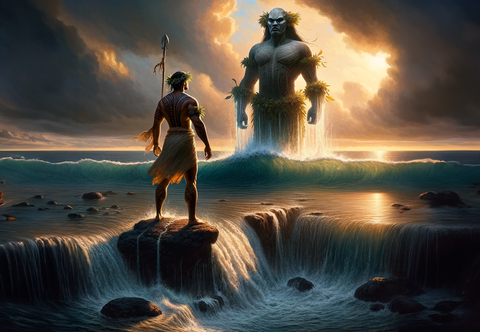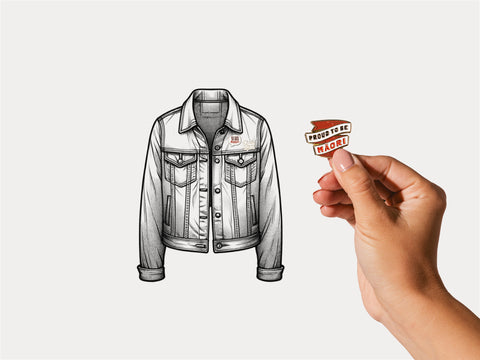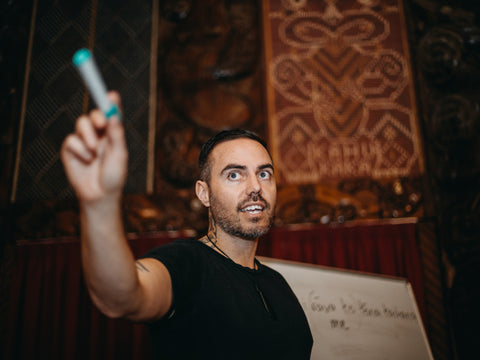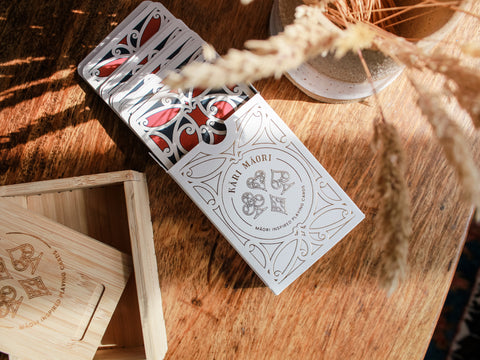In the ever-evolving landscape of technology, the integration of Artificial Intelligence (AI) raises crucial questions about its impact on Māori culture, particularly in the realms of language and art. As some of our followers have shared their perspectives, concerns emerge about AI's lack of mauri and wairua, the essence and spirit that give life to Māori traditions.
As opinions clash on the role of AI in te ao Māori, some adamantly believe it has "no place in te ao Māori", while others see its potential in language revitalisation and innovative progress for te iwi Māori. The clash sets the stage for an ongoing, unavoidable intersection of technology and tradition.
An Empty Copy: AI and the Breakdown of Whakapapa
According to one contributor, AI-generated imagery is devoid of creativity:
"AI has no mauri, no wairua. It creates nothing on its own, it simply responds to a prompt, parasitic, leeching from the work of others. It doesn't record where it took from, so the whakapapa of artwork is broken." - Jay
The resulting "artwork" often appears ghoulish and sinister, lacking the cultural depth that traditional Māori art embodies. AI imagery fails to recognise or acknowledge whakapapa (origins), disrupting the lineage and story behind each piece of artwork and story.
Moreover, the concern extends to the use of AI in language translation. It's not just about the words; it's about the deeper understanding embedded in the process of learning te reo Māori. Questions arise: "Who did you learn from? Where did you learn? What deeper understanding exists?" AI offers a shortcut to understanding the language without the personal investment and cultural context, ultimately resulting in a loss of mauri and wairua (essence, vitality, spiritual essence).
A follower shares, "The context of learning is so important, too. Because you're not just learning a language. You're learning its history, the cultural context and how all the parts of te ao Māori are interconnected."
Tools in the Hands of the Informed
On a more optimistic note, one contributor emphasises that the effectiveness of AI is dependent on the person using it. Comparing it to the tools used by talented contemporary Māori artists like Kereama Taepa and Hemi Macgregor, who incorporate 3D printing and computer-aided design, AI can be viewed as just another innovative tool to embrace. The key difference lies in the cultural context and tikanga that these artists bring to their work, ensuring it is informed by traditional practices.
However, the risks associated with open AI lie in its unregulated use. Unlike skilled artists who adhere to tikanga, open AI currently lacks limits on usage and purpose, posing a threat to the integrity and sensitivity required when dealing with Māori cultural expressions.
Another follower shares, "AI is supported by data that is inherently bias. If iwi Māori were to construct their own data sources for their own AI, how powerful would that be?"
Privacy and Fundamental Rights: A Legal Perspective
From a privacy law researcher's viewpoint, the lack of fundamental rights in New Zealand raises concerns about the creation of tech that appropriates Indigenous First Nations' cultures:
"...there seems to be very little consideration before creation of such tech which appropriates the culture. The response at the moment is reactive." - Sarah
The reactive response to such issues highlights the need for proactive discussions and support for Māori working in the AI sphere. Addressing these challenges requires collaboration and consideration of data sovereignty, ensuring that Māori perspectives are central in shaping the discourse around AI.
Safeguarding Māori Narratives
The discussion around AI and Māori culture draws parallels with the handling of kōrero, pūrākau and whakapapa. Some expectations in iwi and hapū around passing on certain history and information is that the iwi/hapū holds the authority to tell their story. Māori cultural narratives should not be commodified without proper consultation and investment in the people who hold it as a taonga or have been directly affected by certain historical events.
In conclusion, the integration of AI in Māori culture demands a delicate balance between technological advancements and the preservation of cultural richness. As technology evolves, it is imperative to ensure that AI is harnessed as a tool for empowerment and advancement rather than a force that erodes the mauri and wairua of Māori traditions.
—
Additional reading material:
What does A.I mean for te reo Māori? | The Project NZ
How will ChatGPT impact te reo Māori? Data sovereignty experts weigh in | RNZ
Wānanga works to carve a pathway for Māori Artificial Intelligence | The University of Waikato
Is the growth of AI a threat to Māori? | Te Ao Māori News
Artificial intelligence revives Māori dialects | Newsroom
Aotearoa AI Summit: Engaging with Māori in Artificial Intelligence | AI Forum
—
Cover image: generated by AI. The generator received the prompt, 'Māui confronting Tangaroa at the ocean's edge.' While initially presenting an enchanting portrayal of the specified scene, a closer inspection reveals certain dubious details:
- Māui's hands are distorted is not holding the spear, which appears to just disappear behind his shoulder.
- the moko (tattoo markings) appear to have more of a Polynesian reference rather than closely resembling moko Māori.
- headwear that doesn't appear to have any historical relevance
As a follower shares, "These AI generated moko are just tribal designs which is a rip off our Polynesian and Māori motifs we've all been working hard to retain"
In the realm of artistic expression, interpretation is 'in the eye of the beholder'. However, entrusting AI to craft scenes rooted in ancient legends, Māori deities (atua), and historical references opens the door for a distortion, amalgamation, and misrepresentation of the culture.








